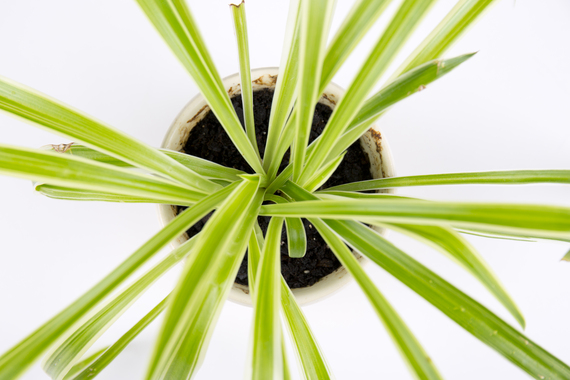Air purifiers and HEPA filters combat indoor air pollution, but for a greener option, use houseplants. Studies show the plants filter out VOCs, which results in less indoor air pollution.
According to the EPA, indoor levels of pollutants may be 2 to 5 times -- and occasionally 100 times -- higher than outdoor pollutant levels, making it one of the top five environmental risks to public health.
Visit your local nursery, and bring home a few of these plants to clear the air:
1. English ivy
This plant thrives best in rooms with little sunlight. Its leaves absorb formaldehyde, a common pollutant used in the manufacturing of building products, including floorboards and synthetic carpet dyes.
2. Peace lily
This shade-loving plant removes three of the most common VOCs: formaldehyde, benzene and trichloroethylene. Benzene is a carcinogen found in paints, furniture wax and polishes. Trichloroethylene can be found in inks and paints. Be careful, as this plant is poisonous to pets.
3. Spider plant
Ideal for people who may lack a green thumb, the resilient spider plant grows long leaves and tiny white flowers. It combats benzene, formaldehyde, carbon monoxide and xylene, a compound found in many solvents and paint thinners.
4. Aloe
Sure, aloe soothes burns. But it also helps remove airborne formaldehyde and benzene. It's easy to grow and thrives in lots of sunlight.
5. Rubber plant
Rubber plants are low maintenance and effective in removing carbon monoxide, formaldehyde and trichloroethylene from the air. This plant needs bright, indirect light.
6. Bamboo palm
Bamboo palms grow between 3- to 6-feet tall, and filter out formaldehyde, benzene and carbon monoxide.
7. Snake plant
Also called the mother-in-law's tongue, the snake plant is one of the best houseplants for filtering out formaldehyde. It also absorbs carbon dioxide and releases oxygen.
Beginner gardener? Here are 10 tips to get you started.

